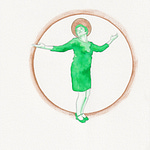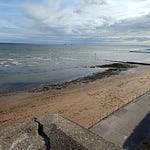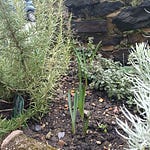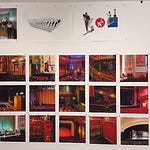Part of the rhythm of being an artist (or writer, curator, researcher) is making applications. Each opportunity involves a very different applying procedure (online portal, image size, image format, word count, box that counts words, box that counts characters etc etc). In fact, all opportunities are very different, offering money, support, time, space, accommodation or equipment variously. Therefore, deciding what you will apply for takes some consideration and discernment. Applying to everything you see is a fast track to feeling overwhelmed and worn out. Each application will require a minimum of one day of unpaid work. And so: what opportunities are worth your time investment? I write this post with some of my thoughts on making applications that preserve your energy and enable you to make applications in good faith.
Why apply? Making an application involves refining your vision, and articulating your ideas in ways that hook your reader. This process in itself adds value to your work, it means you have readily assembled words and phrases you can use in other situations outside of applying (emails, studio visits, statements). So which of your ideas are ready for this attention? Ready to be polished up and shown off? If you have any vulnerable or doubting thoughts about an idea, it is not the right time to send it off, and any negative feedback you receive in not being selected might hamper how you feel about the idea. Keep the idea to yourself for now and let it grow, develop your confidence with it until you feel braced to share it in an application.
Making an application means you will have a guaranteed reader, a dedicated audience. How exciting! One reason to apply is to get your work in front of the selection panel. So look up who the applications will be reviewed by, do the selectors or organisation excite you? Do you want to be on their radar? You can think of applying as remote or passive networking–your proposal doing the work for you.
Creating your application can feel time-consuming and daunting until you find the methods that work for you. I’ll share my application pipeline–I’m now at a place where it’s not really arduous or stressful for me to apply. I come across opportunities in emails that I might highlight in my inbox, or Instagram, which I’ll screenshot on my phone. When I’m next sitting with my bullet journal, I’ll look at my emails and screenshots and write them out on a page I have for deadlines, and add to my monthly planner on the deadline date. Writing things by hand feels like a first step in contemplating the opportunity, considering suitability, and if I really am interested. Somehow that physical gesture makes the thought enquiry more real, even though it might sound a laborious process. Writing it into my month plan also enables me to see if there is ample time to apply, and if I have any deadline bunching. If I have more than two deadlines in one month, I’ll think about which ones are my priorities for now, and I’ll strike off any others. I know that if I work on more than two a month this can tip my mindset into beleaguered, and that can impact my thinking in all that I’m doing. In that sense, it’s not worth it.
Two or three weeks before a deadline I’ll review all the requirements and see what the criteria for selection are. I’ll gather together what I intend to submit that I have already–similar applications, images, recent CV etc, and put into a folder on my computer. These I’ll evolve into a targeted proposal nearer the deadline. I’ll write a day into my planner to do that work, in the week leading up to the deadline.
As I go about life, usually on a walk, my mind will turn to the application and I’ll gather some thoughts on how I might approach it. With ample space between finding the opportunity and writing the proposal, I have time to dream while I’m doing other things. This means that ‘doing other things’ is a key part of my professional life, and I make sure each week I’m doing a breadth of activities to give my imagination space to roam. For example, other things I do include: meditation twice a day, yoga, pole dancing, MMM dancing, walking, running, cycling, and wild swimming. I don’t do all these weekly but I make sure I’m doing a range of things over the week. My intention is to move my body in order to dream, I’m not focused on physical accomplishments. I also try and see at least one exhibition or art event a week that will inspire me.
When the time comes to make an application, I begin by handwriting in an exercise book all the parts of the application. I do this after I’ve meditated, first thing in the morning, while I drink coffee in bed. These are the perfect conditions to apply myself with a clear mind. Later, I’ll type up these notes, hone them and paste them into relevant boxes, editing and shaping as I go. If time allows, I’ll complete the application, then leave 24 hours before I press submit. This means I can read over again for clarity and cohesion and usually pick up a typo or two. It also means I don’t feel harried as I submit.
I’ve evolved my process so that I can make what I’m calling a good-faith application–I try not to bring any of my own unconscious feelings of not being good enough, or overlooked, or resentful of having to write another application to the process–all of this is for me to do. I know from experience, that making a bad-faith application, in which I unconsciously don’t feel good enough, or anticipate rejection or apply in order to affirm my own feelings of being thwarted or overlooked is counter-productive. It takes self-examination and honesty to see good and bad-faith actions in our professional life and this can be uncomfortable. I don’t invoke this work in order for you to review your past actions through a lens of self-recrimination. It’s delicate work putting yourself out there in good-faith and the mercurial unconscious can often be going rogue, holding on to messages of inferiority while you are out there doing the work. Rather, I’m showing how examining our own good and bad-faith behaviour can give us more opportunities to feel like an agent in our own lives.
When I’m ready to press submit, I let go. I cross off the application on my Deadlines list, adding the selection announcement date. I let it go on its independent journey away from me, and I release emotional attachment. It has now become a lottery ticket, like all of the other submissions. I try to avoid indulging further thinking about the outcome.
I frame making applications as energy for myself and my work. Then I release it without attachment. When I hear the result, either rejection or acceptance, I process my feelings and take my time before talking about it to anyone else. I don’t think about other applications or proposals while I emotionally process.
In my next post I’m going to write some thoughts on acceptance–getting acceptance letters. For me, this is possibly the hardest emotional work and it’s still a work in progress. Still, I’ll share what I’ve learnt and how I try to approach. Also, I’m turning these posts on rejection, applying and acceptance into a handy cheat sheet PDF, available from me if we work together. If you’d like to support in untangling your thinking around making applications we can detangle together. Get in touch if you think I can help.
The process of becoming intentional, dreaming visions and releasing emotions that can block our creativity is the theme of the one-day retreat, Nurturing the Creative Heart, that I’m offering with Ric Stott on 28th September. We’ve designed this day as a space for you to find clarity and direction from your intuition, as well as identifying the practices that support you. Ric and I are excited to work together because we come from different backgrounds, however, in the place where we meet we found a depth of renewal or fortification that we will share with you.












